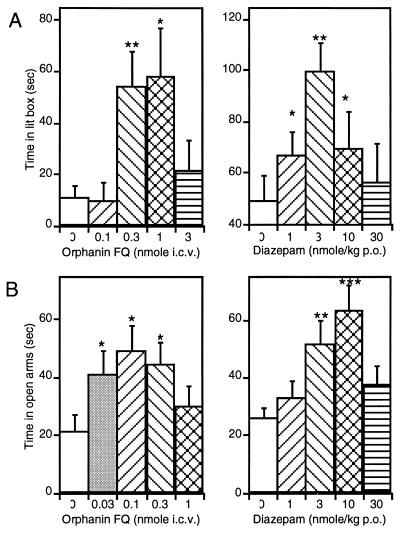Figure 1.
(A) Increase in open area exposure time induced by i.c.v. OFQ (Left) and oral diazepam (Right) in the light-dark preference test in mice. Note that baseline was significantly lower after transcranial injection than after oral administration. Motor performance subsequently evaluated in a horizontal wire test is described in Table 1. (B) Increase in open arm activity induced by i.c.v. OFQ (Left) and oral diazepam (Right) in the elevated plus-maze test in rats. Locomotion in the closed parts of the maze was not modified; performance was evaluated in tests of forced locomotion and spontaneous exploratory activity (Table 2). Data are means ± SEM (n = 10–20 in A and n = 16 in B, except in OFQ’s control group where n = 32), and statistical significance was determined by a single factor analysis of variance followed by post-hoc Bonferroni test for multiple comparisons (∗, P < 0.05; ∗∗, P < 0.01 vs. vehicle).

